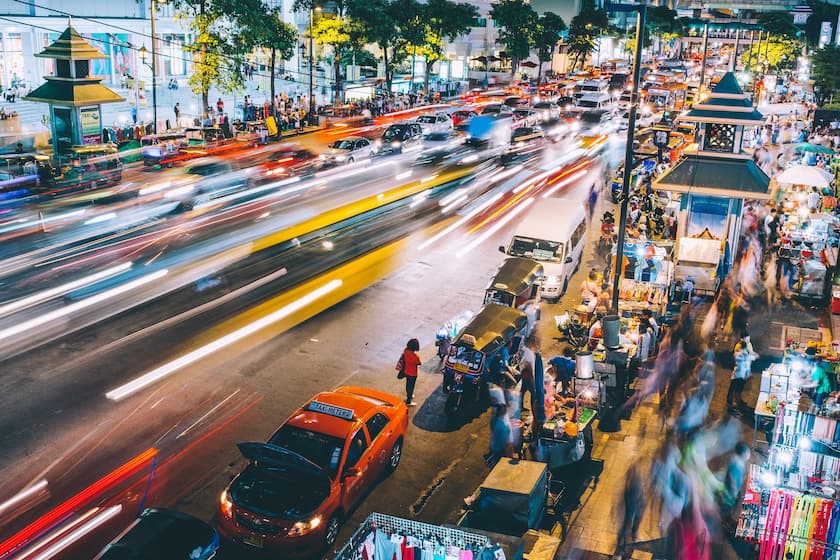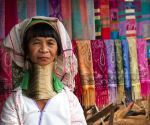Explore the Japanese Culture in Bangkok
Bangkok is a smorgasbord of Asian and other cultures, with pockets of traditional culture-specific buildings and enterprises dotted throughout the city. As you explore the bustling Thai metropolis, it’s easy to pick out the Chinese, Indian and Western areas, marked as they are by traditionally-styled buildings and identifiable languages. While some are more tucked away and harder to find, the Japanese community has made one area of Bangkok its home from home.

Flavours of Japan
Thai locals and past visitors to the city are familiar with the vibrancy of the Sukhumvit district, particularly the Sukhumvit Road which runs through Bangkok. It’s here that you’ll find the largest population of Japanese residents, with international Japanese businesses, restaurants, drinking holes and markets giving the community a true Eastern feel.
Sukhumvit Road itself is a heaving hub of cars, bikes, tuk-tuks and pedestrians. It’s lined on both sides with shops, restaurants and bars, and is very popular with international business travellers and expats. However, the narrow roads and alleys that lead off this busy main street hide some true gems and take you into the heart of the Japanese community.
One such attraction is Nihonmachi, a Japanese community mall with a host of restaurants that delight the palate with true Japanese cuisine and flavours. This eatery-focused mall houses around 15 restaurants and has sufficient variety to tickle the taste buds of Thai locals and tourists while staying true to the authentic flavours that the Japanese community relishes.
Décor throughout the mall reflects the Japanese culture, and this is carried through the various establishments with many offering dining on the floor or around upturned beer crate tables. Menus vary from restaurant to restaurant, but you will find all the Japanese favourites on offer including plenty of seafood, rice dishes, sushi and the ever-popular saki.
The Japanese Village
The influx of Japanese nationals to Thailand has its roots in the late 16th century. This was when Japan allowed overseas trade and many countrymen travelled to Ayutthaya, which was the capital of Thailand at the time, for this purpose. Over the years the number of Japanese settling in Thailand increased dramatically. Japanese residents have gradually spread to other parts of the city, dissolving the initial community but forming new pockets throughout Bangkok.
The Thai-Japanese Association was formed in 1935 to strengthen and promote relations between the two nations. One of its notable accomplishments was the establishment of the Japanese Village, a memorial development on the site of the initial Japanese settlement from centuries ago, on the bank of the Chao Phraya River opposite the Portuguese Village.
There’s little to see of the original settlement, however a memorial park with large trees, a Japanese-style garden and pavilion give visitors a semblance of the Japanese culture. The park is also home to a monument in remembrance of the first Japanese settlers in the area. Visitors can wander through the small museum that illustrates the history of the area and displays a collection of old Japanese books and other artefacts from the initial settlement.
Siam Takashimaya
Food plays a vital role in Japanese culture and society. Meal times are sociable events and are used to build relationships, strengthen bonds and promote societal development. They are also a time to thank gods through practising traditional rituals.
The Siam Takashimaya department store in the new world-class Iconsiam development showcases spectacular Japanese cuisine in its recently-opened Rose Dining experience. Located on the fourth floor of this high-end Japanese store, Rose Dining is a unique concept that has transformed the space into an old-town style Japanese street lined with eateries offering mouth-watering dishes. All the restaurants are Japanese in origin, with this being the first outlet outside Japan for some brands.
Meals are prepared to the highest standards, using ingredients imported from Japan, and cooked by Japanese chefs. Guests can choose between restaurants serving traditional dishes from the Land of the Rising Sun or select a Japanese fusion eatery or one with a Western influence that still maintains the authenticity of Japanese dining.
Each restaurant is true to its roots and this becomes obvious from the classic décor and fine details. This authenticity can also be tasted in the food and seen in the preparation and presentation. Rose Dining brings the high-end aspect of traditional Japanese cuisine to Thailand, transporting visitors to another world and allowing them to experience authentic upmarket Japanese dining.
Japanese Markets and Supermarkets
Apart from the large selection of restaurants, Bangkok also has several markets and supermarkets with a Japanese focus. One of the biggest of these is The Market in Ratchaprasong. In addition to a large number of stalls selling traditional Japanese foodstuffs, clothing and other items, it houses Don Don Donki. This is the second Thai branch of the Japanese discount chain Don Quijote, and sells an extensive range of products at decent prices.
Other establishments such as the Japanese Fresh Wholesale Market, Shinsen Fish Market and Makotoya give visitors the chance to experience a true market vibe as they wander among the stalls selling fresh foods and produce.
Bangkok is a vibrant city with a life of its own that attracts visitors from all over the world. It has a host of interesting places to see, exciting things to do and unique experiences to explore. It’s the hub of Thailand, yet it also incorporates many other cultures that you’d be disappointed to miss out on. With more than 55,000 Japanese residents living in Bangkok, this is a culture that you’ll encounter regularly. Rather than moving on to the next Thai attraction, take a moment to experience a little taste of Japan in Bangkok.
Related Articles
- Hidden Gems in Bangkok
- A Bangkok City Break
- Chinese New Year in Bangkok
- Historical Thai Houses in Bangkok
- Bangkok Vegetarian Festival




